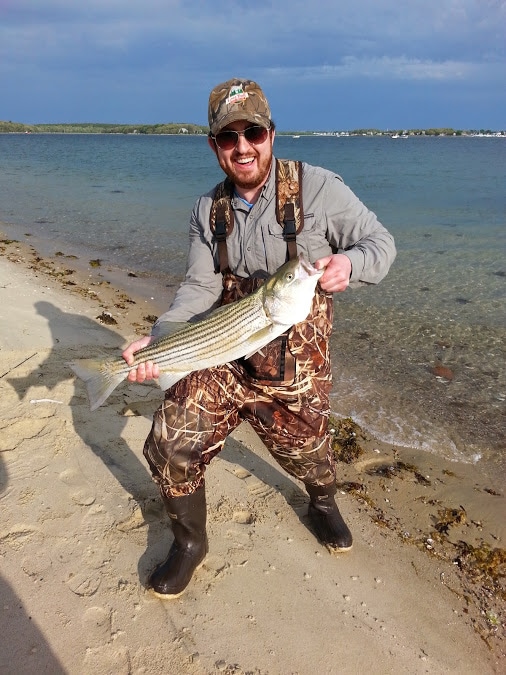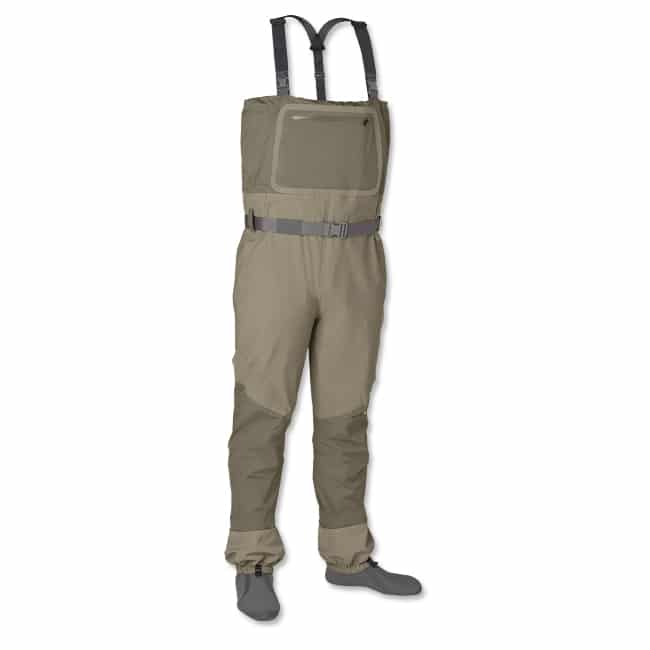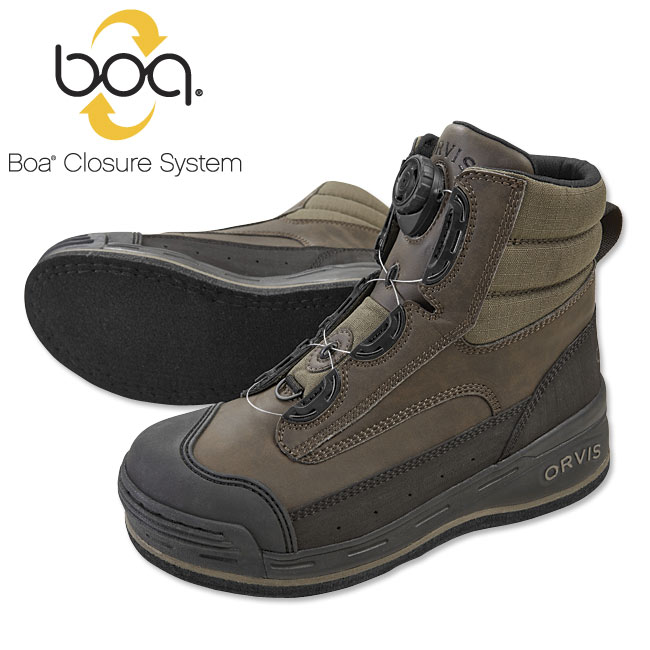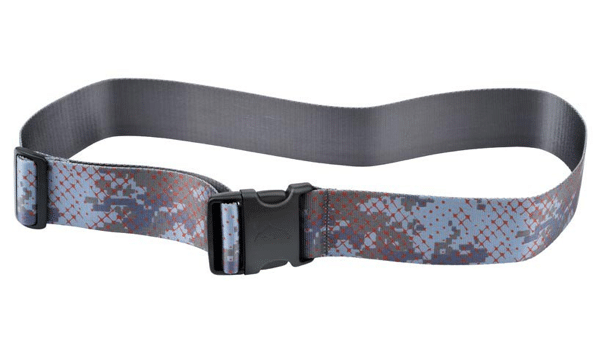For shore anglers the second most important gear purchase they will make (beyond their rod and reel) are waders. There are many options and styles to consider. Here are the pluses and minuses of each.
Boot foot vs. stocking foot
Boot foot waders have a heavy duty boot attached. The primary advantage of this type is convenience: it is easier and quicker to pull these waders on rather than taking the time to pull on stocking-foot waders and then also pull on and tie wading shoes. While this may be easier, the boot portion may or may not be comfortable for long walks in soft sand or over slippery rocks because the boots often have a somewhat “sloppy” fit. Also, the seam between the wader material and the heavier boots on boot-foot waders is prone to leakage.
Stocking foot waders
This type is more labor intensive to put on because you will also have to use wader shoes. The bottom (sock) section of this type of wader is typically made of waterproof neoprene, which has a tendency to bunch up when the wading shoes are put on, so it’s vital to get a shoe that has plenty of room to accommodate the thick neoprene. It’s a very good idea to try on wader shoes before purchase, if possible, or buy them from a retailer with a solid return policy. However, the big advantage of stocking-foot waders with wading shoes is fit and comfort. Good, well-fitting wading shoes give excellent ankle support and the better ones are light enough to wear comfortably for extended periods of time. If everything fits as it should this set-up is safer for wading than loose fitting boots often found on boot-foot waders.
Wader material
Many years ago there were only two options – heavy rubber waders or canvas/treated waders. Both materials were heavy and prone to cracking and leaking. Then back in the 1980s, neoprene waders came on the scene. Anglers immediately took to them because the stretchy nature of neoprene made this type of wader quite comfortable and also warm when wading in cold water. But this was also something of an issue: yes, neoprene is warm but often TOO warm, especially for long walks down the beach in the summer. Some anglers still prefer neoprene but before long that material was supplanted by the new generation of waterproof “breathable” fabrics. This light and flexible material proved to be a winner, although the first couple generations of the stuff were not very durable. These days, however, almost all quality breathables can be counted on to be leak and tear resistant under normal use for many years.
Wader style
By far, the most popular waders are the chest-high type. They almost all have built in suspenders with heavy duty but easily released clips and the suspenders are adjustable. The advantage of chest-high waders is that you are unlikely to wade deep enough that the water will find its way over the top and inside. If you are a surf fisherman who is wading in waves, adding a good quality “surf top” pull-over jacket that can be cinched at the waist will keep an unexpected swell form giving a wet, cold surprise. Keep in mind that you must select the correct size based on your height and weight. There are many options there, and premium waders should fit you perfectly. Things like articulated knees make bending and walking easier.
Chest-highs are still pretty warm, depending on your clothing beneath. This may be a good thing but many anglers have discovered the advantages of “guide style” waist-high stocking foot waders (with wading shoes). If you are certain you will not be wading in deep water, waist high waders, which really come up almost to most people’s chests when pulled up high, make lots of sense. They allow you to easily take off or put on additional layers of clothing as needed without dealing with suspenders and they are cooler for those long walks to your secret fishing spot.
Avoid the old-school “hip waders” often seen on the covers of old fishing magazines. Unless you are wading in very shallow water, it is almost certain at some point you will step into a hole that will send water down inside these waders. Plus the straps used to hold them up, which are supposed to be attached to your belt will have the disconcerting habit of pulling your pants down as you walk!
Wader boot or shoe soles
Rubber or lug soles are commonly used by most saltwater fishermen. Felt soles (once commonly used by trout fishermen) have fallen out of favor in recent years as they have very little gripping power out of the water and in fact, due to the spread of Whirling Disease in fresh water, they have been banned in many states. Lug soles will do the job in most situations but in recent years many fishermen have begun using boots and shoes with metal studs to increase holding power and safely. Kits are available to install them yourself but many good quality wading shoes come with them already installed. Highly recommended!
Tips, recommendations, additional gear
First and foremost, ALWAYS use a wader belt when wading. These nylon belts are usually included with waders when purchased. A wader belt will keep water from making its way down your legs if you happen to wade a little too deep or a wave hits you unexpectedly. This is an essential safety accessory.
Some waders are made with hand-warmer pouches attached to the front. This can be a trip-saver in the early or late season. The most expensive waders from companies like Simms and Orvis also have built-in waterproof zippers strategically located to allow the call of nature to be addressed without having to pull the wader down – a nice option, to say the least!
Bottom line
As with most things, “you get what you pay for.” All waders will leak, sooner or later. The more expensive, well-made ones will take longer to reach that point, and also will be more puncture resistant. They will also have extra material covering seems and reinforcement in areas like the crotch and knees that undergo stress. Some anglers will only buy their waders from LL Bean company because of their lifetime warranty. In any case, select waders that fit well because the best waders won’t even be noticed when they’re used. Then you can focus on what really matters: fooling the fish!



















